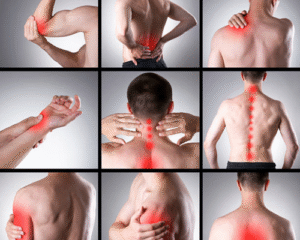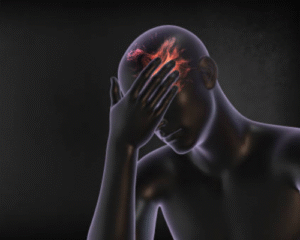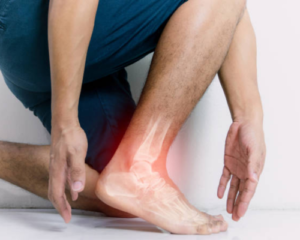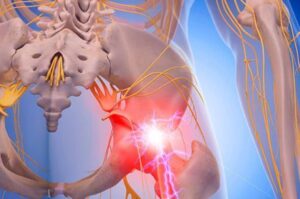Pain is something almost everyone experiences at some point in life. It might show up suddenly after an injury, or it might build slowly and linger for weeks, months, or even years. While pain is often seen as a single concept, it’s important to understand that not all pain is the same. In fact, how long it lasts and why it started can change how it should be treated.
In this article, we’ll explore the key differences between acute and chronic pain, why those distinctions matter, and how understanding your pain type can help you get better results from treatment.
What Is Acute Pain?
Acute pain is the body’s natural response to injury or illness. It comes on suddenly and is usually sharp in quality. The good news is that acute pain tends to be short-lived and often resolves once the underlying issue has healed.
Common causes of acute pain include:
- Sprained muscles or joints
- Cuts, burns, or broken bones
- Post-surgical pain
- Dental work
- Infections or inflammation
Acute pain is often treated with rest, ice, medication, or short-term medical interventions. While it can be intense, it usually goes away once the body recovers.
What Is Chronic Pain?
Chronic pain lasts longer than the typical healing time and often continues for three months or more. It can start after an injury, but it might also develop without any clear cause. In some cases, the original injury heals, but the pain remains due to changes in how the brain and nerves process pain signals.
Examples of chronic pain conditions include:
- Arthritis
- Fibromyalgia
- Nerve damage or neuropathy
- Degenerative disc disease
- Migraines or tension headaches
- Pain following surgery or trauma
Chronic pain can be complex. It’s not just about damaged tissue. It often involves the nervous system, emotional stress, and long-term changes in how the body reacts to pain.
Why the Distinction Matters
Knowing whether your pain is acute or chronic is more than a technical detail. It directly affects how you should be treated.
Treatment for Acute Pain
Acute pain usually improves with:
- Over-the-counter or short-term prescription medications
- Ice or heat therapy
- Physical rest and gradual return to activity
- Simple procedures to address the source of pain
The goal is to support the body’s natural healing process while keeping you comfortable.
Treatment for Chronic Pain
Chronic pain often requires a more layered, long-term approach. This might include:
- Interventional procedures such as nerve blocks or injections
- Physical therapy to improve strength and function
- Cognitive or behavioral strategies to manage stress and pain responses
- Non-opioid medication options
- Regenerative medicine or other advanced therapies
At clinics like Alleviate Pain, the goal is not only to manage symptoms but also to improve quality of life by helping patients regain movement, reduce dependency on medications, and feel more in control of their bodies.
When Acute Pain Becomes Chronic
Sometimes, pain that starts as acute becomes chronic. This can happen if:
- The original injury doesn’t heal properly
- Pain signals continue even after the body has recovered
- There’s nerve involvement or inflammation that doesn’t resolve
- The person becomes more sensitive to pain due to stress, inactivity, or isolation
This transition doesn’t happen overnight. But if pain is still present months after the original event, or if it seems to be getting worse rather than better, it may be time to think of it as chronic and adjust the treatment plan.
The Emotional and Physical Impact of Chronic Pain
One of the most difficult things about chronic pain is that it affects more than the body. Over time, it can lead to sleep problems, anxiety, depression, and even social withdrawal. People often feel misunderstood or dismissed when their pain doesn’t show up clearly on tests or scans.
Understanding that chronic pain is real, and often requires a different kind of medical support, is the first step toward healing. Specialized clinics are trained to treat not only the physical aspects of pain but also its emotional and psychological impact.
How a Pain Management Clinic Can Help
If you’re unsure what type of pain you’re experiencing, or if your symptoms haven’t improved with general care, a pain management clinic can help clarify the situation. At Alleviate Pain, we start with a full assessment to determine whether your pain is acute, chronic, or somewhere in between. From there, we work with you to create a plan that fits your goals, lifestyle, and health needs.
Our approach is built on careful diagnosis, personalized treatment, and consistent follow-up. Whether you’re dealing with recent pain or something that has been around for years, there are options to help you move forward.
Final Thoughts
Pain is a signal that something needs attention. But not all pain should be treated the same way. Acute pain often resolves with short-term care, while chronic pain requires a deeper, more specialized approach. Knowing the difference can help you find the right kind of help and avoid frustration from treatments that don’t work.
If you’re unsure about what type of pain you’re experiencing, or if you feel stuck without a clear answer, reaching out to a specialist could be the next best step.
To learn more about our approach at Alleviate Pain, visit alleviatepain.com or see us on Google to read patient reviews and request an appointment.
FAQs
Q: Is it possible to have both acute and chronic pain at the same time?
A: Yes. Some people experience a new injury (acute pain) on top of ongoing chronic pain. In those cases, treatment should address both layers.
Q: How do I know when to see a specialist for my pain?
A: If your pain has lasted more than three months, is getting worse, or is interfering with your daily life, it may be time to seek specialized care.
Q: Can chronic pain ever be fully cured?
A: In some cases, yes. In others, the goal is long-term management and improving function. Many patients experience significant relief with the right treatment plan.





















